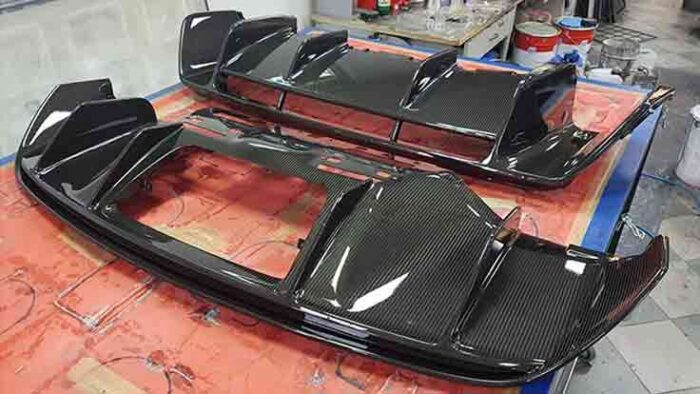Auto racers love carbon because it helps them win races by enabling them to achieve high speeds. But that’s only half the story – racing cars also need to be sturdy, so they can withstand crashes.
Visible carbon parts are produced from dry fabrics that are impregnated with epoxy resin. They are then baked in an autoclave at high temperature and pressure until the resin crosslinks.
Strength
Carbon is the black gold of high-performance materials. It’s strong, stiff, and very light. It’s no wonder that auto racers love it, as speed is their primary focus and winning a race requires both strength and power.
The strength of carbon fiber is far greater than that of aluminum or steel. It also has a higher stiffness-to-weight ratio. This allows for the design of components with tailored stiffness along specific axes.
This flexibility in structural design makes carbon a very appealing material for many applications. It can be combined with a variety of other materials such as foam, wood and even metal to create very interesting composite structures. Carbon fiber also has a low coefficient of thermal expansion, so it is dimensionally stable. This is especially important when a part needs to withstand temperature changes.
Lightweight
Having carbon fiber car parts on your ride can significantly reduce the weight of your vehicle. This is important because it increases the car’s performance by enabling it to travel faster and farther than conventional vehicles. It also improves fuel efficiency and reduces CO2 emissions.
Carbon fiber has a high strength-to-weight ratio. It is also resistant to heat and corrosive elements, making it an ideal material for automotive applications.
The black, shiny material can be found throughout a car and exudes classiness and sportiness simultaneously. It’s a favorite among designers and enthusiasts alike, as it offers excellent strength and stiffness with low specific weight.
Stiffness

Carbon fiber can be stiffer than steel, but it’s important to consider how that stiffness compares to the desired design of a component. A part that is too stiff may not be able to take the intended amount of load and could fail in a manner that is less desirable than expected.
Unlike other materials, such as aluminum or plastic, which are homogeneous and isotropic, carbon fiber is heterogeneous and anisotropic. This allows manufacturers to tailor the mechanical properties of a component by adding more material at locations that carry a high load and less material at areas that do not carry loads.
This is very useful for car parts, such as crash helmets, that must withstand impact. Also, foam can be added to a carbon fiber layup to increase thickness with minimal weight increase.
Durability
Carbon fiber is strong enough for car parts, and even though it looks shiny it can withstand scratches and impacts. However, it’s important to note that this material is not impervious to heat and needs to be properly protected.
Carbon can be used in many different ways in cars, from add-on parts to full chassis components. The most popular methods of manufacturing are wet layup, resin infusion, and prepreg. The type of resin and carbon fiber that is chosen will have a huge impact on strength, stiffness, and durability.
Unlike metals, composites do not have homogenous or isotropic properties. Therefore, it’s important to consider the direction of the fabric when designing a part. To make sure the parts are safe, they must be subjected to crash testing.
Aesthetics
Carbon fiber is a beautiful material with plenty of mechanical properties, but it isn’t easy to make. The raw materials required to make carbon are expensive, and the fabrication process is complex and time-consuming.
Molding a carbon fiber part requires careful planning. Carbon fiber is a soft, malleable material and must be bonded to epoxy resin, which acts as a glue. The molding process itself can also be challenging. Hard edges can lock in the mold or result in “resin bridges” — areas that contain more resin than carbon fiber.
Conclusion:
Visible carbon parts are crafted by hand and can take a whole day to produce one component. Regular cleaning, protection from harsh chemicals and UV rays, and proper storage can help maintain their beauty for years to come.

